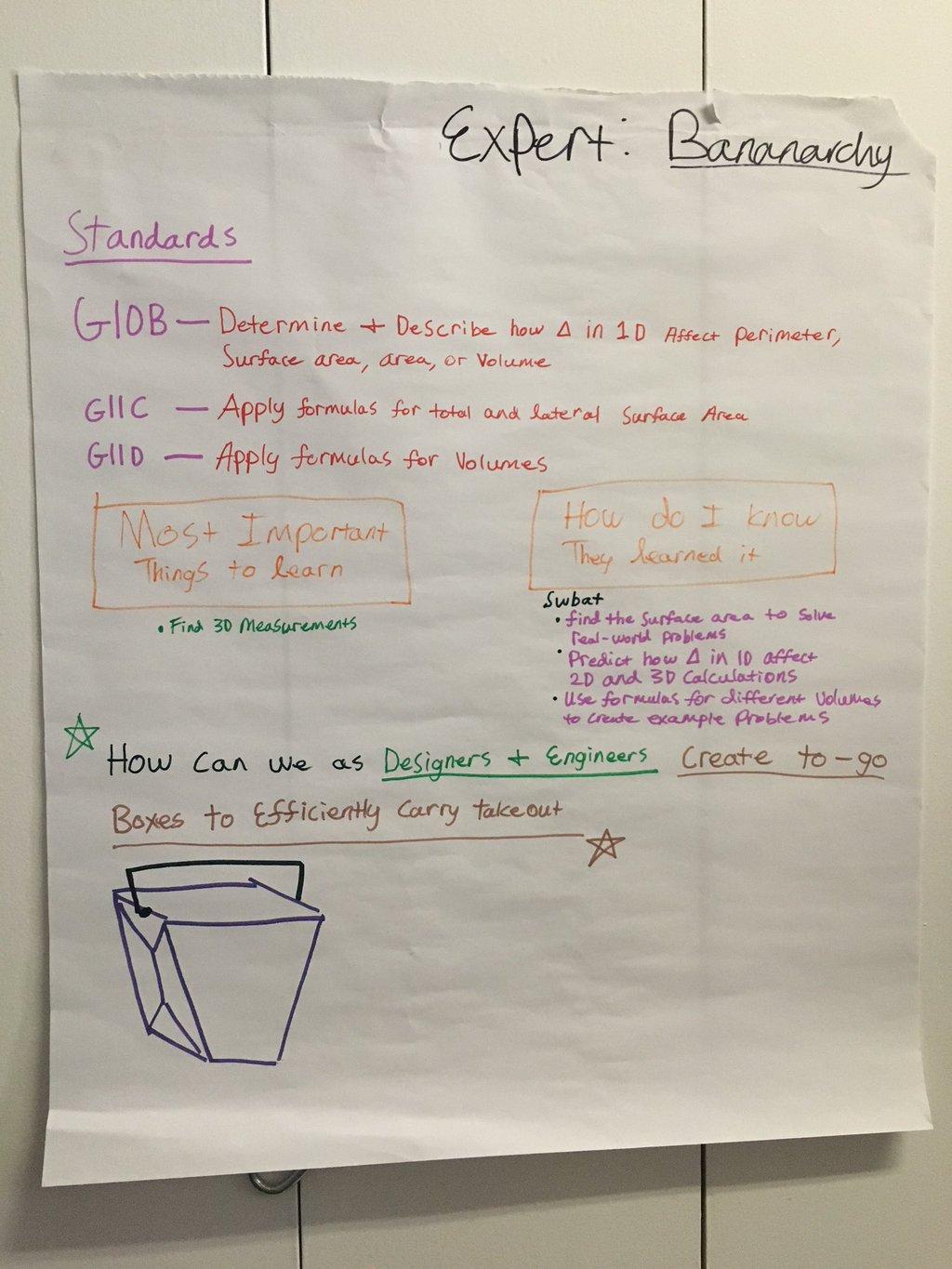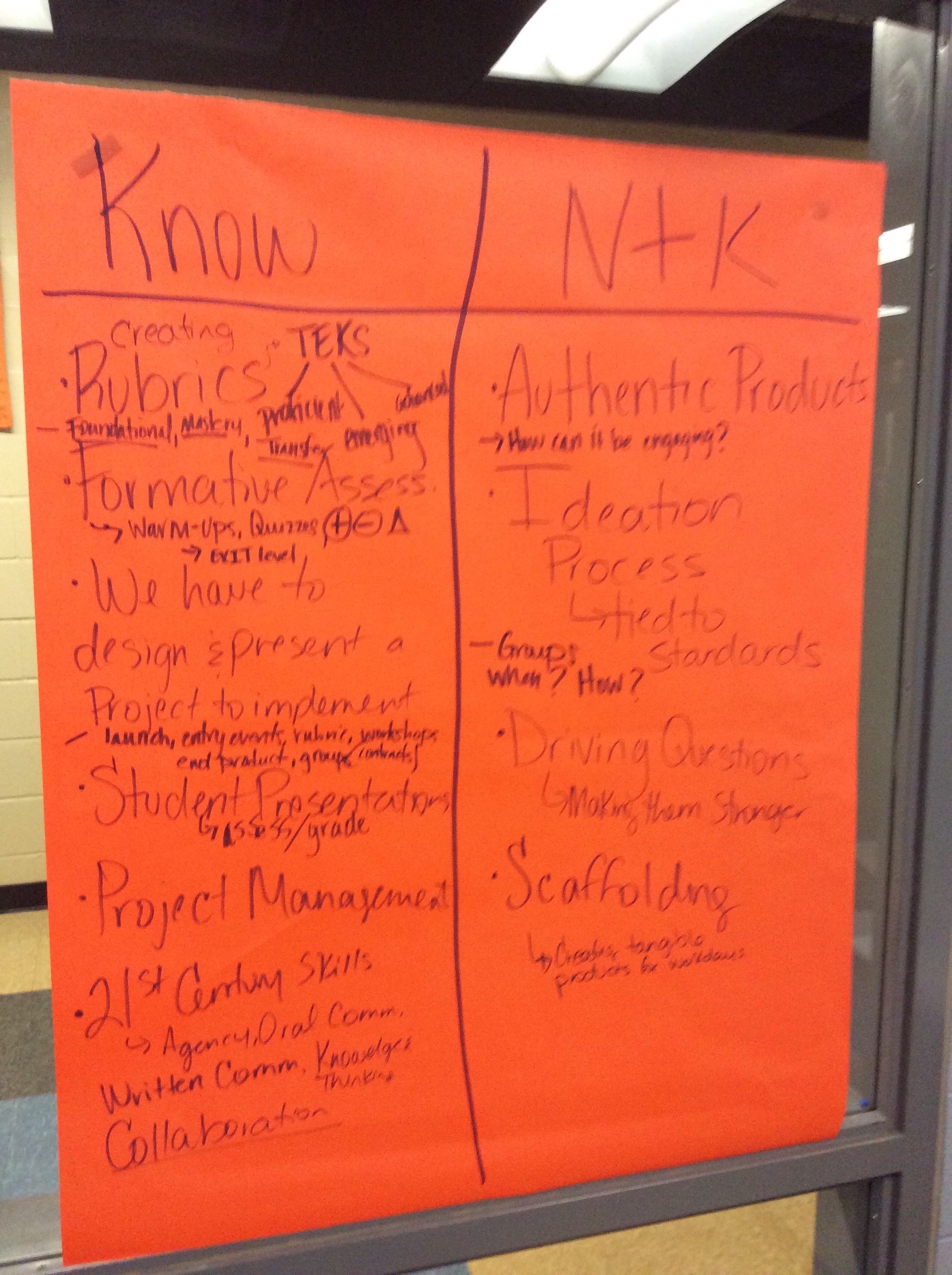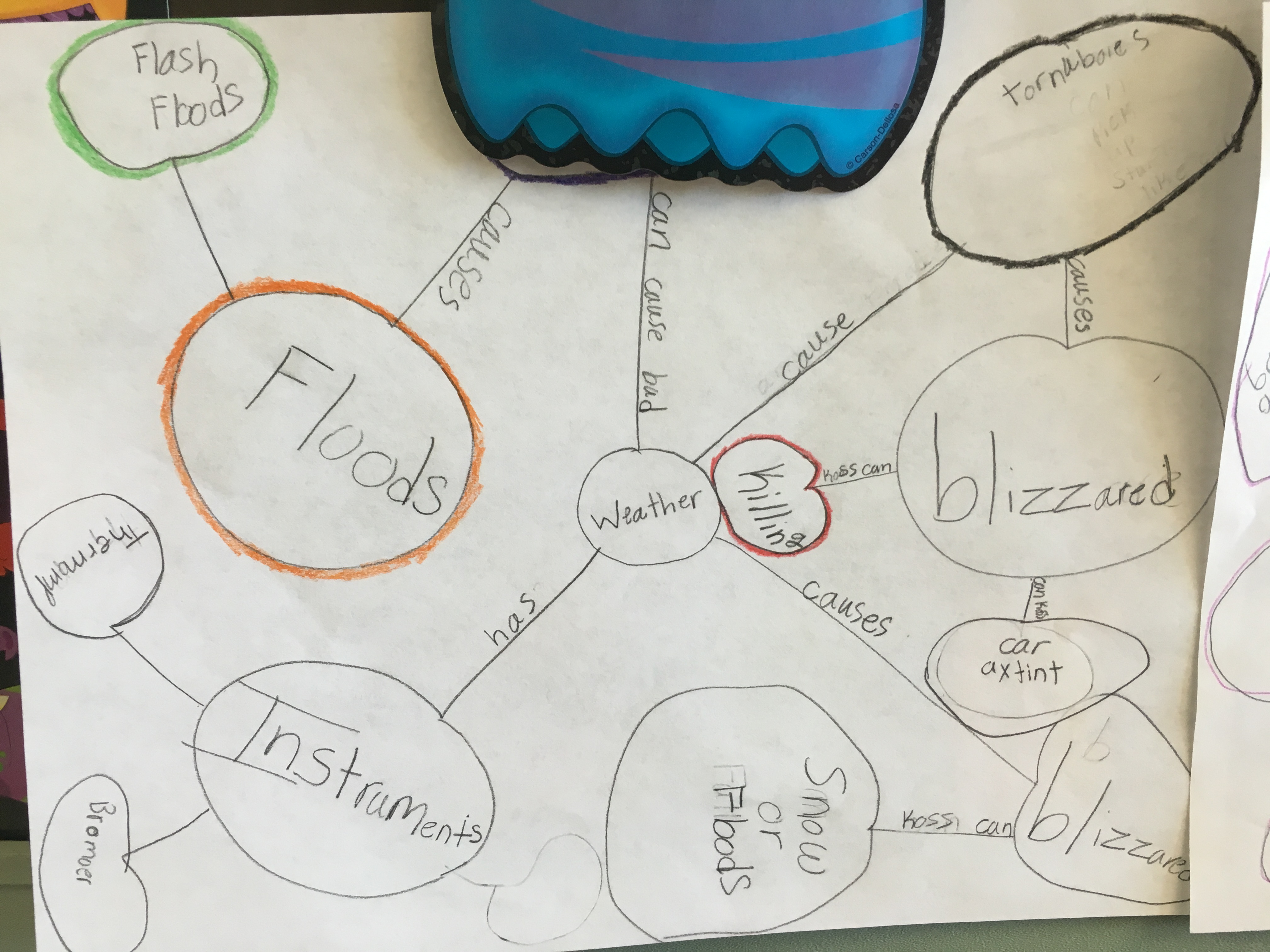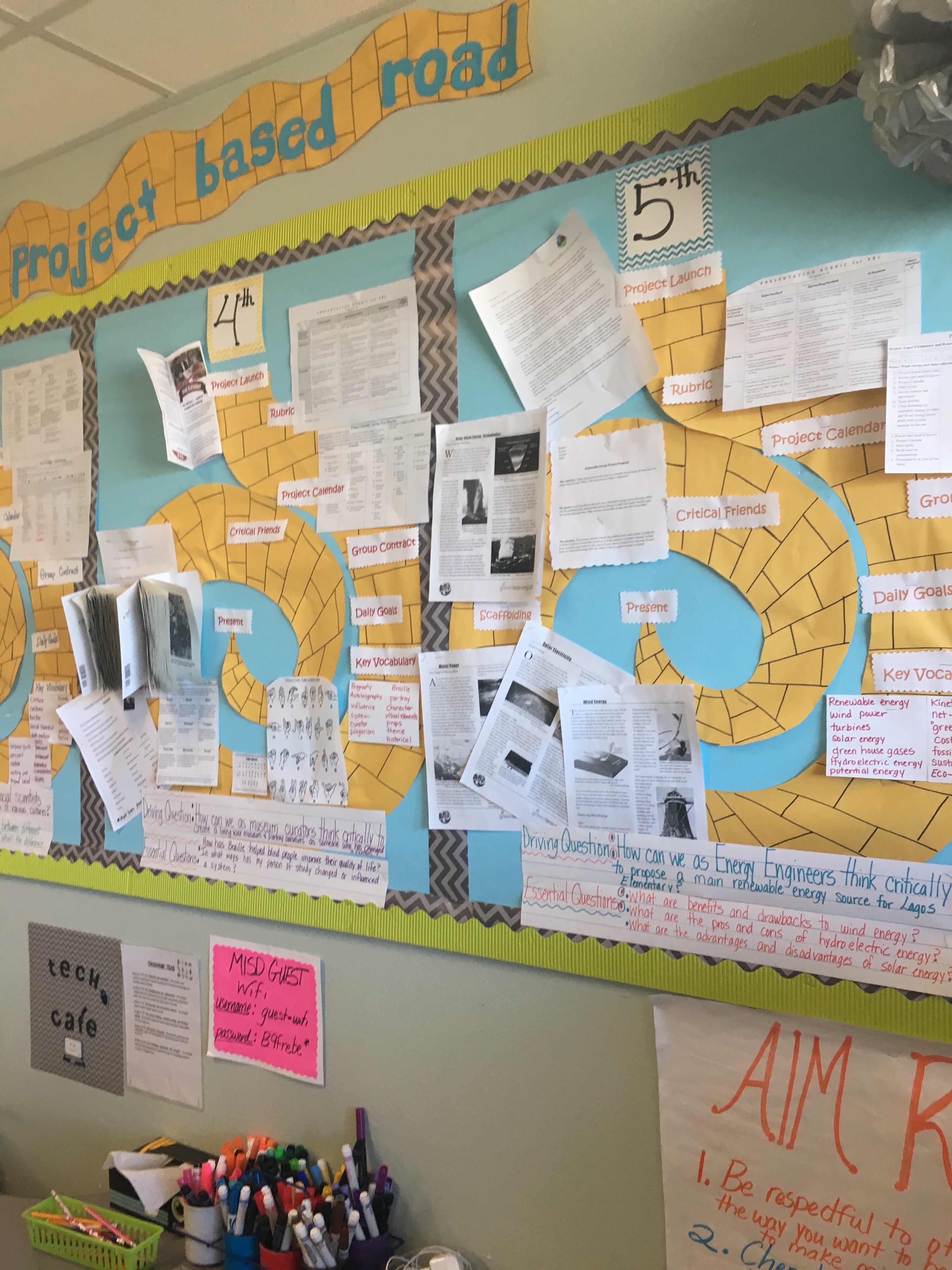My Very First Professional Development
What a “tech-tastic” week this has been. I’ve had four days of professional development where the extremely talented Claudia Acevedo facilitated a model project that walked fifteen people and myself, all of us new to project based learning, through the process of project design. This training has been invaluable to me. Project based learning was discussed and explored in my UTeach studies, but I still felt like I had some major gaps in my understanding of the logistics that go into designing an effective project. I still feel that way, but with all the work time the PD provided, as well as the workshops Claudia took us through, I feel solid about my next project.
Day One. Day one started nice and early with introductions. Immediately after we got to know each other, Claudia launched the model project. My fellow teachers and I watched a video relating to PBL and then were given a letter introducing us to the problem we needed to solve. The teachers created groups out of our tables, then proceded to have a discussion of what PBL actually is and the different looks it can take on. From there, we built our Knows & Need to Knows. Claudia had us ask for workshops based on what we felt like we still needed to know, then handed us the rubric. Based other groups’ K&NTKs, Claudia introduced the class to different components of PBL that my group already felt comfortable with. The first day wrapped up with a tour of some of the PBL classrooms on campus followed by work time where my group split up to work on our own individual projects. The work time was structured in such a way that we needed to complete a backwards design project ideation form by the end of the day. This form is something that instructional coaches at MNTHS provide for teachers as a way to scaffold the ideation process. It starts by having the teacher break down the Texas Essential Knowledge and Skills that they are designing a project around. Next, the teacher identifies the most important concepts from the broken down standards, identifies student learning objectives, and then what real world products and roles are associated with these objectives. From there, the driving question for the project almost writes itself.

Day Two. We jumped right in and started creating posters for the projects that we had in mind. Each of the posters included the relevant standards broken down, a rough draft of the driving question, and a pictorial representation of the final product. After a set amount of time, the other teachers and myself participated in our very first critical friends. Critical friends is an activity designed for professionals as a means to critique and provide feedback: you can read more about it in my first blog post. After the critical friends, the group observed more classes on campus, and then spent the rest of the day responding to the feedback and growing their project by developing a comprehensive rubric.
Day Three. And on the third day, the teachers brought forth rubrics: high school, middle, and even elementary. We started by doing a positive delta peer review. I was not a fan. Most of the teachers just wrote positives, and it ended up not being helpful at all. Just like with my students at the high school, if I don’t require them to write at least one of each of the positives, negatives, and deltas, I don’t get anything I can work with. It was exacerbated in this case because Claudia omitted the negatives. Following the peer review, we spent a significant portion of the day creating a scaffolding framework. This is an impressive artifact that details exactly what I expect students to know, to learn, to reach for, how I intend to scaffold them, and what I plan to do once they either achieve those goals, or fall short. Keeping with the PD’s trend, our group toured some of the classrooms on campus. Since the remaining two days of PD were at a elementary school campus instead of my home campus, it was much more engaging for me. I saw all kinds of things that I did not expect. I saw third graders engaging in authentic research. Second graders were using iPads to create excel files and power point presentations. It was mind blowing that these students were able to do all of this and stay on task at such a young age. The picture above, of the concept map, was created by second graders. I didn’t think I could get my juniors to create a concept map that detailed, but if these student can, I clearly have a misconception about my geometry kids. The last thing we did on day three was introduce and start work on the project calendar.
Day Four. Last day! The first half of the day was spent on one large workshop. The activity contained four stations; managing student work, time, people, and space and resources. The workshop was essentially one mega dump of tips and tricks for PBL; it was one of the most helpful sections for me. Like before, we spent time observing PBL at the elementary level. Part of the afternoon was spent looking at different types of launch events and working on proposals for our own projects launch. The very last thing we did in this PD was create a presentation and do critical friends with the whole class.
Big Take-Aways. Wow, what an awesome and overwhelming experience. I am so glad I got to participate and spend time designing an authentic math project while getting feedback from one of the best PBL implementers that I’ve ever seen. There was so much information in these four days that I know I’ve missed stuff. Regardless, there are a few things that I am definitely going to incorporate into my projects going forward.
-
Project Road Maps. I LOVE these and I hadn’t seen them before. The road maps are awesome because they help the students track where they are going.
-
I feel like I really learned a lot about how to keep the K&NTKs alive. I know I didn’t talk about it in the daily overviews, but Claudia blew me away with her ability to consistently return to the need to knows and asses where we, as the students, were.
-
Rubric Design. I didn’t think I needed much help with rubric design, but I got some fantastic advice about how to break apart my rubric so that my students don’t get overwhelmed. I’ll be putting the collaboration rubric on the group contract from now on. I also won’t be giving students the oral presentation rubric until a few days before the students present.
All in all it was a fabulous professional development course and I look forward to implementing as much of what I learned as I can. Thank you for reading the second installment of 789.school! Hopefully you’ll stick around and subscribe. OH! Also, I got a twitter. You should follow me or whatever. My handle is at the bottom of the page!
With all of the love,
Teach’
Got any questions comments or concerns about this weeks blog post? Please shoot me an email and I’ll get back to you when ever I find my Time-Turner.


